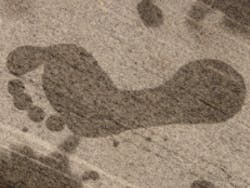WaterWorld Weekly Newscast, Oct 15, 2018
The following is a transcript of the WaterWorld Weekly Newscast for October 15, 2018.
Hi, I'm Angela Godwin for WaterWorld magazine, bringing you water and wastewater news headlines for the week of October 15. Coming up...
WRDA bill passes Senate, awaits signature
'Venus flytrap' attracts, destroys BPA in water
Research: Bigger cities more water efficient than less populated areas
California bill supports onsite water reuse
Late last week, the Senate overwhelmingly passed America's Water Infrastructure Act of 2018 with a vote of 99-1.
Among the highlights of the WRDA bill, it would authorize $4.4 billion for EPA's Drinking Water State Revolving Fund program over the next three years.
It expands the WIFIA program, authorizing $50 million for 2021 and 2022.
The bill would also require drinking water systems with over 3,300 users to carry out drinking water risk and emergency response assessments.
And it would authorize $6.1 billion for the Army Corps of Engineers for 12 projects and 65 feasibility studies for potential projects.
It's worth noting that while the bill authorizes these programs, it does not appropriate the necessary funds. Congress will have to address that in a separate appropriations bill.
This is the third WRDA bill passed in the last six years. As of Friday, the bill was awaiting the president's signature.
Rice University scientists have developed a unique method for treating water contaminated with bisphenol A, or BPA, a chemical commonly used to coat the insides of food cans, bottle tops and water supply lines that has health implications after prolonged use.
They've engineered tiny spheres made up of titanium dioxide petals coated cyclodextrin molecules.
The hydrophilic outer surface of cyclodextrin attracts the hydrophobic BPA. Once trapped, the BPA is destroyed by reactive oxygen species released from the titanium dioxide petals when activated by UV light.
The scientists say it's sort of like a Venus flytrap for BPA.
The spheres lose their trapping ability after about 400 hours, but the 3-5-micron spheres can be filtered out, recharged, and put back into action.
A team of Penn State researchers analyzed the water footprint of 65 mid- to large-sized U.S. cities and concluded that increased populations in cities may lead to greater water efficiency.
They looked at the cities' full spectrum of water consumption, not just drinking water usage but also the water that goes into the food that each city produces and consumes.
What they found was that on average, larger cities, for their population, consume less water.
The researchers believe that may be because cities are more service-oriented, shifting water-intensive economic activities to less populated regions.
There were a couple of interesting exceptions: New Orleans has a high water footprint for its size and population compared to the trend, while Las Vegas has a much lower water footprint.
The researchers hope to use their findings as a benchmark to help cities develop water sustainability strategies.
New legislation in California aims to support and expand onsite water reuse across the state.
Senate Bill 966, which was signed by Governor Jerry Brown on September 28, will establish consistent, risk-based water quality standards for onsite non-potable systems that align with the most advanced and protective public health standards.
The bill also helps local communities across the state establish consistent oversight and management programs for these onsite water systems.
Onsite non-potable water systems are reported to save more than 50 percent of potable water needed in a typical building.
The San Francisco Public Utilities Commission -- which sponsored the bill -- has been a pioneer in onsite water reuse.
At its headquarters in downtown San Francisco, an engineered wetland system treats all the building’s wastewater, which is then reused for toilet and urinal flushing.
The Living Machine has been able to reduce the building’s potable water use by 60 percent.
For WaterWorld magazine, I'm Angela Godwin. Thanks for watching.
